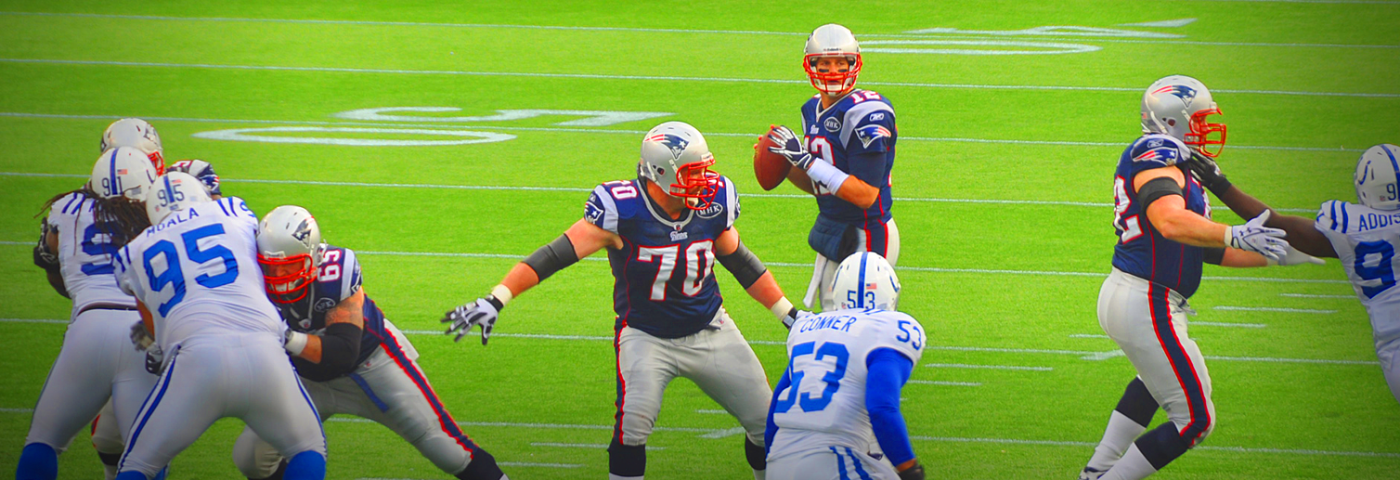A quarterback starting the Super Bowl is, on average, the eighty-fourth player drafted in his year. The pick is based largely on his college career. So why are some quarterbacks more successful as professionals than they were in college?
A quarterback has the ball for about ninety seconds each game, during which time the best quarterbacks make seven successful passes per ten attempts. The worst quarterbacks make five successful passes per ten attempts. Those two extra passes are mostly a result of faster thinking, and the faster thinking is mostly a result of better studying.
How fast does an expert quarterback think?
He has less than one second to solve his first problem: How many opponents are trying to stop him from throwing the pass? Three or four is normal. More than that is a “blitz,” a metaphor of war taken from the German tactic of overwhelming force called blitzkrieg. If the quarterback sees a blitz, or if the line of teammates protecting him has been breached, he must make a quick pass, take evasive action, or sacrifice himself to keep the ball.
If he judges he will survive, he moves on to his next problems: To where should he throw, and when? Potential receivers are spread across the 160-foot-wide field running planned, assigned routes. Each route includes an agreed upon moment when the receiver will turn and look for the ball. The quarterback must gauge each receiver’s prospects. Who is in pursuit? Who can interfere? His decision is based not only on position but also on speed and direction. The fastest receivers run nineteen miles per hour — faster than an Olympic sprinter starting the 100 meters. The quarterback can throw the ball at fifty miles per hour. He must predict what each receiver’s situation will be when the ball arrives. He must think about this while moving and avoiding collisions, and with an obstructed field of vision. If he takes a fraction of a second too long, his options collapse. Opponents converge. Receivers exhaust their routes. On most plays he has fewer than three seconds to make a decision and act.
He cannot see what we see: twenty-one men engaged in danger and chaos. He can only notice the important things, and he must decide what to do about them almost instantly. For example:
We didn’t have much to lose. The clock was running out. I kind of saw the defensive coverage and I figured, it’s tough for the safeties [rear defenders] to move in those conditions. [It was snowing.] We wanted to try to get [Rob Gronkowski, a potential receiver] up the seam [into the space between the front and rear defenders] and then the outside receiver up the sideline. I looked at the safety and he was backing straight up, he wasn’t wide [near the sideline] at all. I kind of looked at him and just gave him a little pump [a fake throw] to kind of hold him [quarterbacks sometimes fake a throw to make defenders move or hold their position] and Deion [the outside receiver] raced by him. I threw it.
These thoughts took less than two seconds. The result was sixty yards of forward progress for a touchdown.
How does a quarterback think so fast?
We can understand that by looking at other disciplines. Like quarterbacks, radiologists are experts in seeing things quickly. What is invisible to us is obvious to them. They can diagnose a disease after looking at a chest X-ray for a fifth of a second, the time it takes to make a single voluntary eye movement. As they become more trained, they move their eyes less until all they have to do is glance at a few locations for a few moments to find the information they need.
This is called “selective attention.” It is a hallmark of expertise.
Adriaan de Groot, a chess master and psychologist, studied expertise by showing a chess position to players of different ranks. He found that Grandmasters evaluated few moves and re-evaluated them less often than other players. One grandmaster evaluated one move twice, then evaluated another and played it. It was the best possible move. This was generally true: Grandmasters never considered moves that were not one of the top five best possible moves. Other players considered moves as poor as twenty-second-best. The less expert the player, the more options they considered, the more evaluations they made, and the worse their eventual move was.
Less thinking led to better solutions. More thinking led to worse solutions. Were grandmasters making their moves by inspiration?
No. Experts do not think less. They think more efficiently. The practiced brain eliminates poor solutions before they reach the conscious mind.
Grandmasters have not been grandmasters forever. When they were masters, they played like masters, evaluating more moves more frequently. When they were expert-level players, they played like expert-level players, evaluating even more moves even more frequently, and so on. By evaluating so many moves, grandmasters accumulate so much experience that they can pay selective attention to a game.
The same is true for an elite quarterback. Like grandmasters, the best quarterbacks experience as many games as possible — not just by playing and practicing, but also by studying other quarterbacks, past and present, at games, on television and, most frequently, on a video database called “Coaches Film.”
One scout describes the best quarterbacks this way:
They just have great anticipation to throw through windows that aren’t there but they are going to open up through study.
Advanced thinkers think in advance. The expert’s first impression is not a first impression at all. It is the latest in a series of millions. The more we learn from our experience and the experience of others — whether in chess, radiography football or anything else — the more selective our attention will become, and the faster we will think.
“How Experts Think” is a modified extract from “How to Fly a Horse.” It first appeared in Medium.



